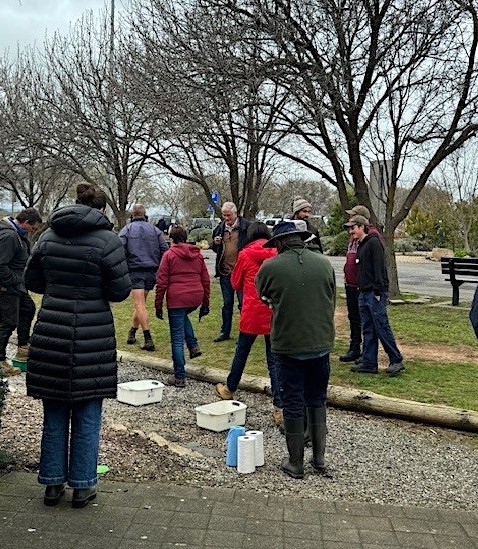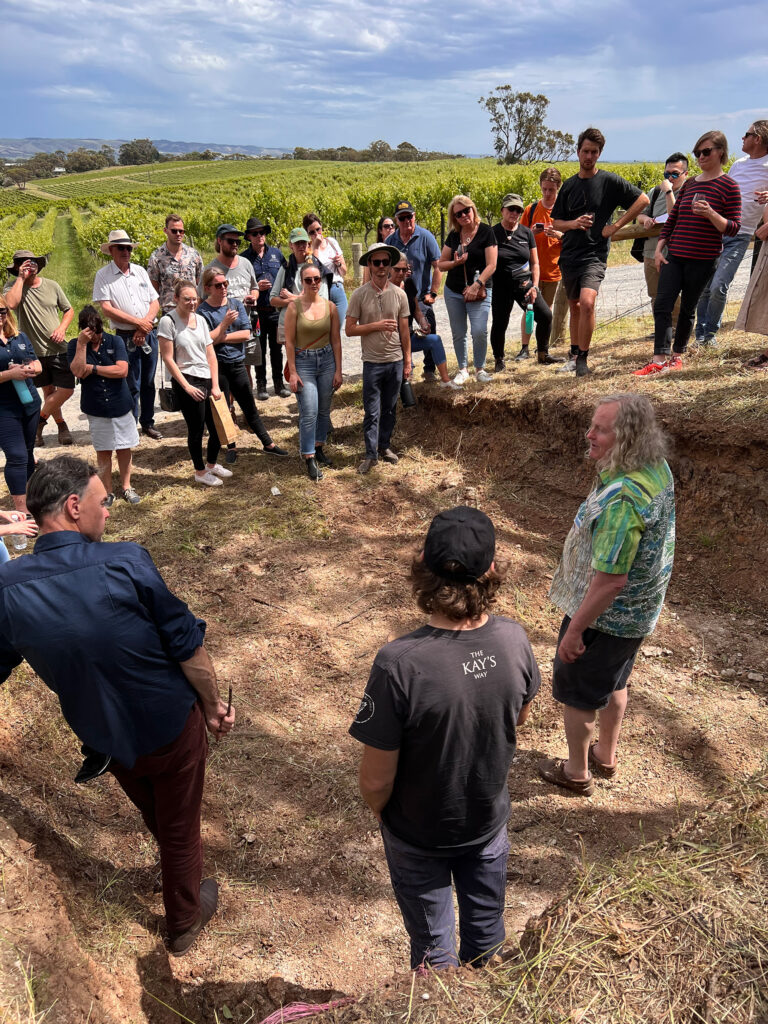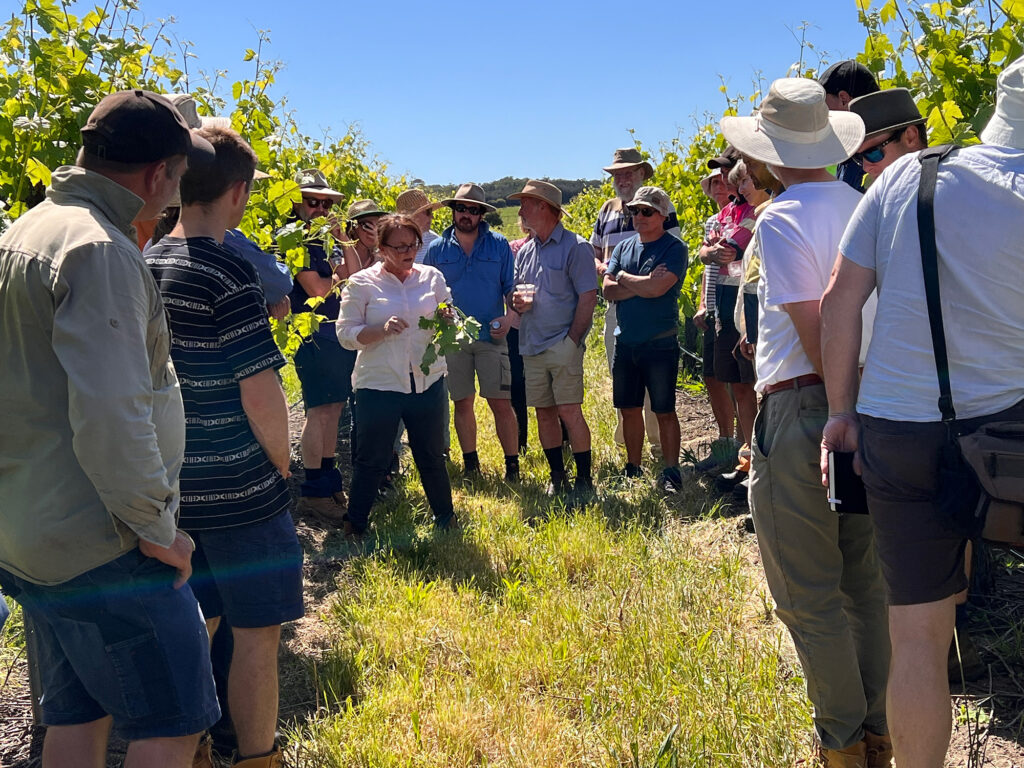Phylloxera prevention has been a strong focus in McLaren Vale for many decades. In fact, the McLaren Vale Grape Wine & Tourism Association (MVGWTA) established a Phylloxera and Biosecurity Working Group back in 2009.
This group has the mission of discussing, understanding, educating and acting on matters of biosecurity or vine health that may affect the sustainability of McLaren Vale’s wine industry. The group also aims to increase knowledge of biosecurity threats and prevent threats from entering McLaren Vale.
With this sharp phylloxera focus underpinning regional activities, it’s no surprise that growers and winemakers in the region are committed to farm-gate hygiene activities.
MVGWTA Grower Engagement Officer Jodie Armstrong said the regional focus was driven by passionate biosecurity advocates including Rae and Drew Noon.
“Phylloxera is very well known in this region and awareness is high thanks to the work of people like Rae and Drew,” Jodie said. “We’ve had phylloxera stickers on the boots of cars here for a long time. It’s been a strong focus for decades.”
“We’ve got quite a lot of Vinehealth Biosecurity signs up in our region, educating visitors about phylloxera and biosecurity. And about 42% of our growers are Sustainable Winegrowing Australia (SWA) members, which means they are ticking off baseline biosecurity practices.”
Regional industry events such as vineyard walks and workshops are also well managed from a biosecurity perspective.

“We set up a QR code that growers and presenters have to scan to register before we enter a vineyard so we know exactly who is at events, and that registration process asks questions about where they’ve been in the past 30 days,” Jodie said.
“This is an important tracing system, as even though most people who attend vineyard workshops are locals, sometimes we get speakers from interstate.
“And we have a boot disinfestation procedure, which is based on Vinehealth Australia’s phylloxera disinfestation procedure, involving a 60 second chlorine dip.
“We use our registration system and boot dipping system for larger events too. We ran a geology tour of vineyards for our cellar door committee, which had about 70 people attending. We had foot baths at each of the properties.”

Jodie said biosecurity practices were more challenging in the wine tourism space. McLaren Vale is popular with tourists and wedding parties due to its proximity to Adelaide and 30km of spectacular coastline.
“We have a lot of tourism events and weddings in the region. Our biggest event is the Tour Down Under, which goes through the region each January. Our main aim with large consumer events is to keep tourists out of vineyards,” she said.
“Vineyards along the route are all notified of the race, and then the majority of them put bunting along the racetrack to stop people entering the vineyards, and there are signs that say please don’t enter the vineyard, so we do what we can.
“Weddings are a bigger issue because photographers always want photos in the vineyard. We’re planning to create a regional brochure for cellar doors, that can become part of the contract when weddings are booked.
“This brochure will talk about vineyard biosecurity and ideally ask wedding parties not to enter vineyards. There are plenty of other great places for photos at cellar doors without entering the vineyard.
“The venues are putting themselves at risk, so we want to give them some options to manage it. One: don’t let people in your vineyard. Two: have a footbath and a sign-in procedure for anyone entering the vineyard. Three: have disposable shoe covers for anyone entering the vineyard. If wedding parties have those options, most will choose not to use the vineyard for photos.”
